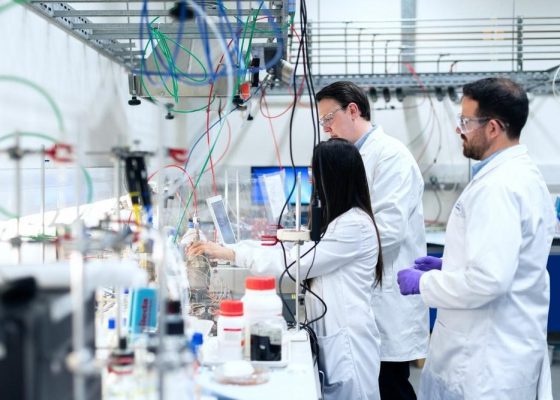
Holistic Business Growth with Psychometrics
Psychometrics is the measurement of psychological variables—anything that can vary between individuals. Psychometrics is a quantified look at consumer personalities. Marketers use psychometric profiles to understand their customers and create tailored campaigns, yielding positive results. Customer and workforce personas help you understand your target audience and your employees, giving you the tools necessary to create successful campaigns and a focused business model.
Customer Personas
Use of customer personas is just one way psychometrics can be applied to marketing. It paints a detailed picture of who your target audience is: what their personality is like, how they interact with others, where you might find them, even what they might like to do! Creating customer personas helps simplify the process of making a targeted campaign. When you know who you are talking to, you know how to talk to them!
Examples of Customer Personas from Good & Co:

Advocate: The advocate is a little bit more traditional in their style. However, they are huge empaths and enjoy helping others! They are supportive and collaborative individuals.

Inventor: The inventor is an independent person by nature. They tend to be introverted, and they aren’t very emotional nor empathetic. However, their incredible creativity is driven by their insatiable curiosity for the world!

Socialite: The socialite is the fearless leader. They are always motivating others with their positive enthusiasm. They are generous, creative, and ever curious; but they are never too formal
Workforce Personas
Workforce personas is another way psychometrics can be applied to business management and marketing. It illustrates what your internal company culture is like—what type of environment your employees are working in. Identifying your workforce persona allows you to understand how your employees work together and how they complete their tasks. When you know your workforce, you know how to effectively run your company. This ensures everyone’s voice is heard—and it ensures everything gets done.
Examples of Workforce Personas from Good & Co:

Frontier Settlers: The frontier settler workforce is proactive and insightful. Employees work in a competitive environment, but they are supportive of each other and are quick to reward hard work. They are creative problem-solvers and never lack energy.

Alchemists: The alchemist workforce is inventive and efficient. Though they function in a structured environment, alchemists emphasize originality and creativity. Employees are proficient at what they do.

Zen Warriors: The zen warrior workforce consists of mentally tough employees. They are meticulous, independent, and committed to what they do. Employees are very flexible and adaptable, making them relentless and efficient problem-solvers.
Growing Your Business with Psychometrics
Understanding your own workforce allows you to spark internal growth. It helps you align your employees with your goals and values in a way that respects their style. When your company is focused and purposeful internally, your company can be focused and purposeful externally. Successfully growing your business begins with developing customer culture. Workforce personas make internal growth possible.
Understanding your customers means you know how to show them that you can solve a specific problem they might have. This, in turn, translates to a more receptive and effective campaign. Successful marketing campaigns drive sales, increase awareness, and foster goodwill toward your brand. However, it’s much harder to achieve these goals when you aren’t speaking your customers’ language. Therefore, you can achieve your marketing goals when you understand who you are talking to. Customer personas simplify the process of understanding.
Adding customer and workforce personas to your toolkit gives your business the potential for exponential growth. Take restaurants, for example.
 Restaurants can use customer personas to identify which segment of their target audience will enjoy their food and atmosphere the most. Simply serving good food isn’t enough to sustain long-term customer loyalty. Neither is trying to serve every type of customer. Customer personas give restaurants the opportunity to narrow the scope of their target audience. They know who they are talking to, so they make sure they are saying the right thing to them. The restaurant makes sure the entire dining experience both reflects the brand strategy and resonates the most with the target audience. This customized experience fosters customer loyalty and advocacy, creating steady business growth over time.
Restaurants can use customer personas to identify which segment of their target audience will enjoy their food and atmosphere the most. Simply serving good food isn’t enough to sustain long-term customer loyalty. Neither is trying to serve every type of customer. Customer personas give restaurants the opportunity to narrow the scope of their target audience. They know who they are talking to, so they make sure they are saying the right thing to them. The restaurant makes sure the entire dining experience both reflects the brand strategy and resonates the most with the target audience. This customized experience fosters customer loyalty and advocacy, creating steady business growth over time.
Additionally, workforce personas help restaurateurs understand their employees. They are then able to build a culture of success that reflects the values of the brand. When everyone is on the same page, employees feel valued. And when employees feel valued, they are more apt to have a deeper personal commitment to the company. They work harder, and they love what they do. The restaurant is then able to appear as a unified front, which customers can and will notice. When a company feels authentic, customers feel compelled to do business. They trust the brand because it feels more personable. So when restaurants make the effort to understand and support their workforce, they are doing more for business growth than a customer-centric model ever will.. They are growing their business holistically.
personas help restaurateurs understand their employees. They are then able to build a culture of success that reflects the values of the brand. When everyone is on the same page, employees feel valued. And when employees feel valued, they are more apt to have a deeper personal commitment to the company. They work harder, and they love what they do. The restaurant is then able to appear as a unified front, which customers can and will notice. When a company feels authentic, customers feel compelled to do business. They trust the brand because it feels more personable. So when restaurants make the effort to understand and support their workforce, they are doing more for business growth than a customer-centric model ever will.. They are growing their business holistically.
It all starts with understanding. It all starts with psychometrics.
If you would like to learn more about how MMG uses target audience personas, visit our page https://mmg-1.com/target-audience/
If you want to take the next step to learn more about your customers and your employees, reach out to us for a free consultation https://mmg-1.com/get-in-touch-with-us/
Categories
Recent Posts
- Maximize Your Reach: Essential Email Marketing Dos and Don’ts for Success July 9, 2024
- Social Media Day 2024 June 30, 2024
- Navigating the World of Social Media Advertising June 20, 2024
- The Power of Visual Content in Marketing April 8, 2024
- Hip Hopper Alert: Easter Bunny Steals the Show with Sunglasses Stunt March 31, 2024
- The Super Bowl Ads 2024 February 12, 2024
- Serving Our Client’s Social Media Platforms Branded Content February 5, 2024
- Days of Future Past January 31, 2024
- The Art of Blending Human Intuition and Data-Driven Insights January 31, 2024
- Beyond Intuition January 30, 2024
Recent Comments